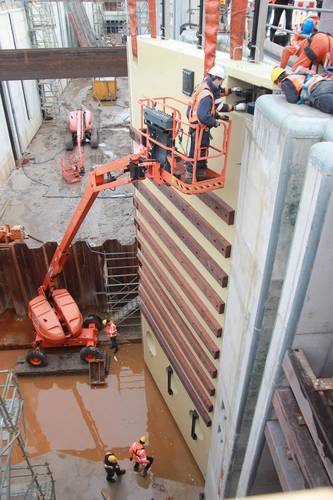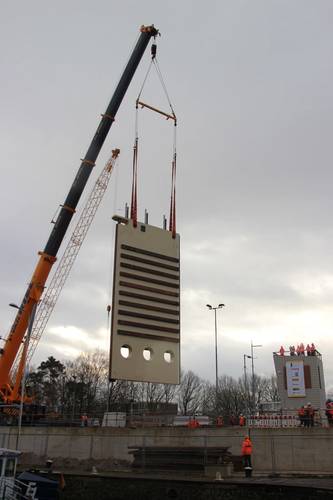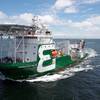Largest FPT Lock Gates Installed in the Netherlands
New fiber reinforced polymer lock gates, reportedly the world’s largest, were installed in the new Lock III in the Wilhelmina canal in Tilburg, the Netherlands on January 9.
On behalf of Rijkswaterstaat (Dutch Directorate-General for Public Works and Water Management), Royal HaskoningDHV has deployed its expertise in the field of fiber reinforced polymers for the design principles, the design review and quality control.
Never before have FRP lock gates of these dimensions (6.2 x 12.5 meters) been installed. The mitred gates can control a water level difference of no less than 7.9 meters. Fiber reinforced polymers are strong, light and require very little maintenance. An important sustainable benefit is that the gates have a two to three times longer lifetime than conventional gates of wood or steel, because fiber reinforced polymers do not corrode. In addition, there is very little wear on the pivot points of the gates, because the gates have the same specific weight as the water.
Rijkswaterstaat and Royal HaskoningDHV are the initiators in the development of regulations for the application of this innovative material in civil engineering structures. Together with market participants, a revision of the national ‘CUR guidelines’ has been carried out and will be published this year. ‘Good regulations and an understanding of the material is crucial to enable projects of this nature,’ says Liesbeth. There is also international interest in this expertise. This was apparent during the Smart Rivers Conference in Buenos Aires in September 2015. The presentation of the gates by Rijkswaterstaat was followed with much interest by international governments and manufacturers attending the conference. The innovation was reason enough for PIANC (the organizer of the conference) to establish a new, international working group ‘Composites for Hydraulic Structures’ in which, in addition to Rijkswaterstaat, the American government is represented, among others. Royal HaskoningDHV is also represented in this committee.
The use of FRP for the lock gates was a joint decision of the province of North Brabant and Rijkswaterstaat and was realized in cooperation with the knowledge of Royal HaskoningDHV and the contractor combination Heijmans/Boskalis. The lock gates were produced by the Dutch company FiberCore Europe and the construction company Hillebrand was responsible for the assembly.
The Wilhelmina canal near Tilburg will be made wider and deeper. Also, the current locks II and III will be replaced with a new lock, new dam walls will be constructed and environmentally friendly embankments will be built. Widening of the Wilhelmina canal will enable larger ships (class IV ships) to sail through the canal in Tilburg faster. This will mean less freight traffic on the roads, less traffic jams and less CO₂ and particulate emissions.














